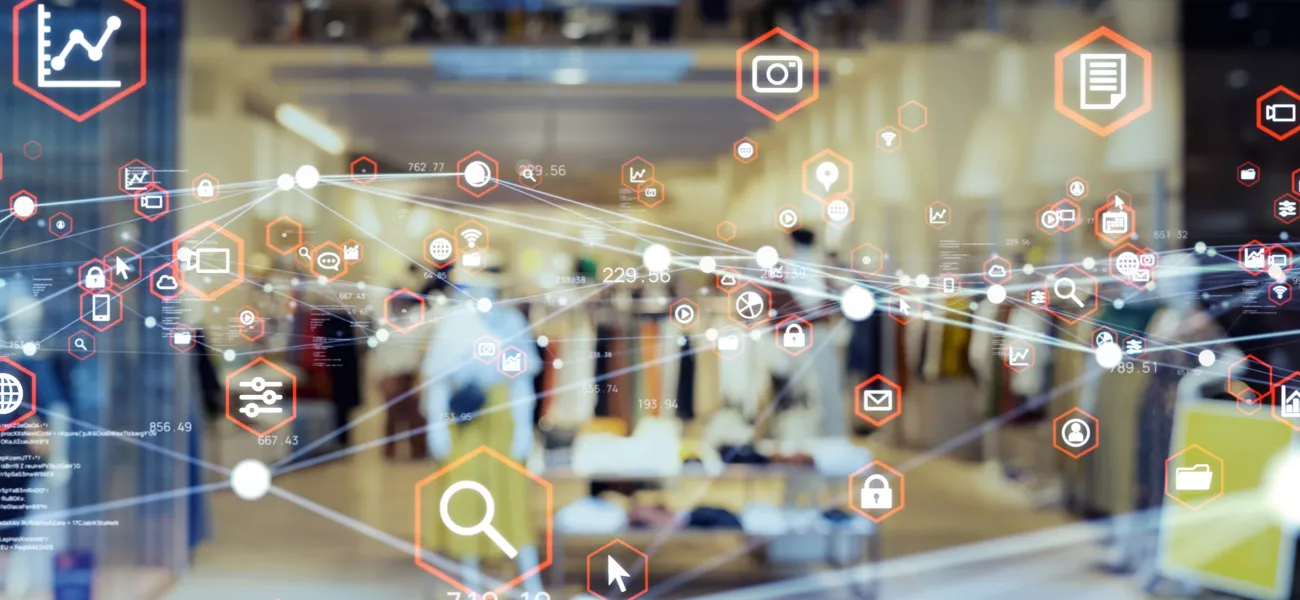
Retail crime remains a significant challenge for the industry, livelihoods, wellbeing, product availability and the bottom line. In this blog we explore the ‘Five Zones of Influence’ as defined by the Loss Prevention Research Council (LPRC) and how retailers can meaningfully implement network video surveillance solutions to prevent and mitigate crime.
Retail crime is a complex issue. Tough economic conditions, the rising cost of living, and the increase of involvement from organized crime networks have brought about a surge in retail crime. With reported rises in violence, robust safety and security solutions to safeguard property, staff, and the public have never been more critical. But implementing safety and security solutions in an effective and meaningful way requires careful and deliberate planning based on data.
To help retailers with the implementation of these solutions, the Loss Prevention Research Council (LPRC) at the University of Florida developed its ‘Five Zones of Influence’ methodology. It follows the flow of people across premises and segments their journey into five key areas. In doing so, it provides a way to visualize and group where crime arises. By collating data in this fashion, trends and common problems can be more easily identified. Not only is your situational awareness improved but remedial steps can be taken that are likely to be of far higher impact.
The five zones within retail premises are as follows:
- Zone 5: The broader community
- Zone 4: Parking area and surroundings
- Zone 3: Store entry and exits
- Zone 2: The sales floor
- Zone 1: Point of impact
Central to the five zones is having the right surveillance solutions in place. Through scene intelligence, surveillance provides the means to identify and capture this vital data, as well as much needed deterrence, the ability to quickly respond to incidents in the moment and documented forensic evidence.
Let’s now take a closer look at each zone.
A ‘zone-led’ approach to technology implementation
Imagine these 5 zones that criminals move through when they commit their crimes. The community, moving towards the parking area, through the entrance, to the sales floor, and then to the point of impact. What if you had extra eyes and sensors capturing who, what, when, and where it all happened throughout these zones? And what if you could go back and look at what happened and take action to prevent it from happening again?
Dr. Read Hayes, University of Florida, LPRC
Zone 5: The broader community
The best defense against retail crime starts with a sense of community and shared responsibility. Nearby stores frequently face the same issues, with repeat offenders targeting multiple stores within a local area, especially if they are a part of a wider organized retail crime (ORC) network. Sharing data with law enforcement and Security Operations Centers (SOCs) is critical to understanding these trends and patterns. Video scene data enables LP/AP professionals to search through footage and support law enforcement with ongoing investigations, allowing for a coordinated response from your community
Zone 4: Parking area and surroundings
The parking lot and surrounding areas of your store are the first places you have direct responsibility for. Capturing and analyzing data here is of vital importance for both proactive prevention and timely responses. With it you can identify potential problematic behavior patterns such as loitering, spot known offenders as they cross boundary lines, and create real-time incident alerts for theft, vandalism, violence or otherwise. Technologies like license plate recognition software also spot flagged vehicles as they return to the scene, all of which is bolstered by the information shared by the broader community in Zone 5.
Zone 3: Store entry and exits
Entries and exits are borders to your premises, both which you can control. Positioning cameras at entrances can secure the customer experience from the outset with public view monitors clearly articulating that monitoring is in progress. Should the situation escalate, access control and network audio solutions both inside the store and externally can prevent entry and exit as needed, all whilst audio messages by staff or security personnel are initiated to ensure the appropriate responses and actions are being taken. Outside of opening hours, loitering detection at entrances can serve as an early warning ahead of burglary or damage, triggering deterrence alarms and lighting to scare off any potential intruders.
Zone 2: The sales floor
Due to the complex nature of activity on the sales floor – especially during peak periods – it can be difficult to maintain total awareness of the interior. Areas in which the layout allows for blind spots can be particularly difficult to monitor, especially making it harder when trying to focus on a specific individual or group. Being able to see and monitor all areas of the store allows you to intervene in real time and review the footage following an incident. Surveillance video in all zones is crucial to successfully prosecuting retail theft. In order to achieve the 5 Elements of Proof, LP/AP professionals need video evidence that clearly shows the offender throughout the entire crime, from the moment they enter the area of interest until the moment they exit the store.
Zone 1: Points of interest and high impact
Although incidents can happen within any area of your premises, there will always be areas of high interest or value that need extra attention. Strategically placing video surveillance technology throughout high-risk zones can alert staff both when acts of aggression or violence take place. All whilst simultaneously focusing on areas with high theft potential to safeguard against crime such as shelf sweeps of frequently stolen items, self-checkout fraud, and theft of high-value products displayed in showcases.
It is important to have a clear picture of what happened on record. Creating a technology ecosystem of surveillance cameras, video analytics, and wearable solutions can be instrumental in providing detailed and critical information relevant to the incident. When combined with the wider documented footage, you are provided with a holistic picture of what has occurred as well as real-time feeds to help guide de-escalation and provide informed instruction.
An informed response to crime
Developing and maintaining an effective crime prevention strategy is a continuous cycle. It requires thorough understanding paired with meaningful responses and continuous refinement and evolution – and at the heart of it sits data. A robust surveillance system will provide you with the means of gathering and analyzing that data, letting you feel confident in how you respond to crime and prevention and enable refinement of those processes. What’s more, video surveillance will remain one of the most powerful tools in crime deterrence while providing the assurance that, should the worst happen, the forensic evidence you need is there.
